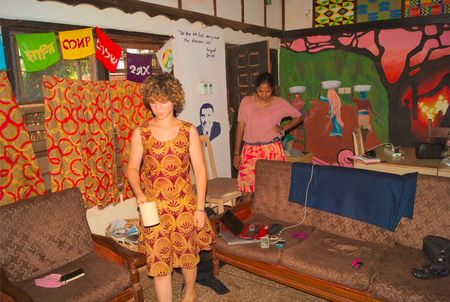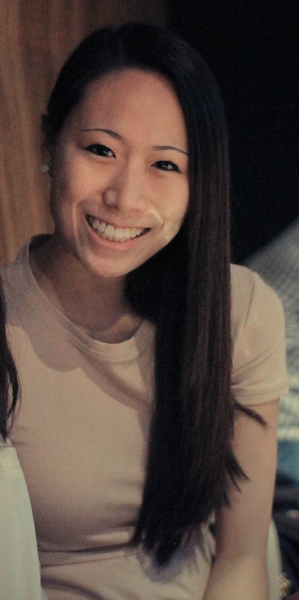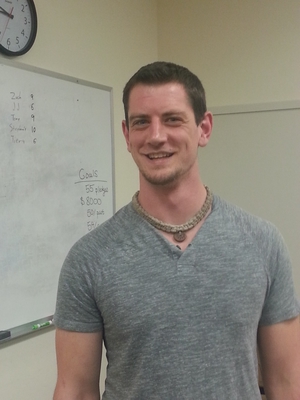On the DUSP by Natasha B. '16
Course 11: Urban Studies and Planning
Holly Josephs ’16, Civil Engineering + Urban Studies and Planning

pictured, left, in the Tamale Peace Corps office in Ghana
When I came to MIT I knew I wanted to major in civil and environmental engineering because I wanted to eventually work on sustainable infrastructure for the US or the developing world. As I started to take classes in course one, I realized I would definitely get the technical knowledge to be able to implement the infrastructure, but that I would be missing out on the big picture of the city or town as a whole. Especially after taking D-Lab development (which is a class in course 11) and traveling to Ghana, I got more excited about planning. Many people in Ghana talked about how badly planning is needed. For me, combining planning with engineering is giving me the opportunity to use creativity and technical knowledge to see towns and cities with a big picture and small picture view. It’s also allowing me to keep the options of both fancy sustainable technology work and development work open.
Jenny Lin ’16, Computer Science + Urban Studies and Planning

I started programming in high school and I loved it. I also volunteered abroad in high school, in Guatemala twice and India once, shaping my interest in international development. At MIT, I wanted to pursue both passions. My first major is electrical engineering and computer science. Sophomore spring, after taking a couple classes in the urban studies and planning department, I declared a double major. Planning compels me because it brings together an array of complex problems and a way of thinking and understanding I was unfamiliar with but have come to love.
My concentration is international development. My favorite class to date is 11.005 Intro to International Development. I am currently in two international development classes that I am really enjoying: 11.475 Power and Politics of Water and Sanitation Planning, and 11.145 International Housing Economics and Finance. I recently planned the International Development Hackathon 2015—an event where students work on projects with organizations working in international development. I also have a UROP this semester—Resources of Urban Africa. The goal of the project is to understand the growth of African cities in terms of physical resource consumption and demand.
Cody Chamberlain ’15, Urban Studies and Planning

I came to MIT because I was good at math and science. After spending a year and a half in engineering, I wanted to zoom out away from the nitty-gritty details to the macro-scale of what progress has done, and more importantly can do, for how we as people live in the world. Course 11 is the perfect place to do this.
The planning department offers a wide array of material to focus on. For example, my field of study is how education systems evolve, or can evolve, to better prepare students for changing economic conditions. I’m focusing on experiential learning and ways to better prepare students to enter STEM fields.
While I found a home in course 11, I feel the greatest benefit the planning department has for MIT students lie in their minor programs. The emphasis on macro-scale thinking, taking a step back each step of the way and thinking “How does this affect the larger world?” is a fantastic complement to the cutting-edge technical degrees that allow engineers to so transform our world. By studying the ways that cities, regions, and even the world on an international scale evolve, you can gain a better sense of the social, political, and economic ramifications of your work, and how it will play in this very human world.